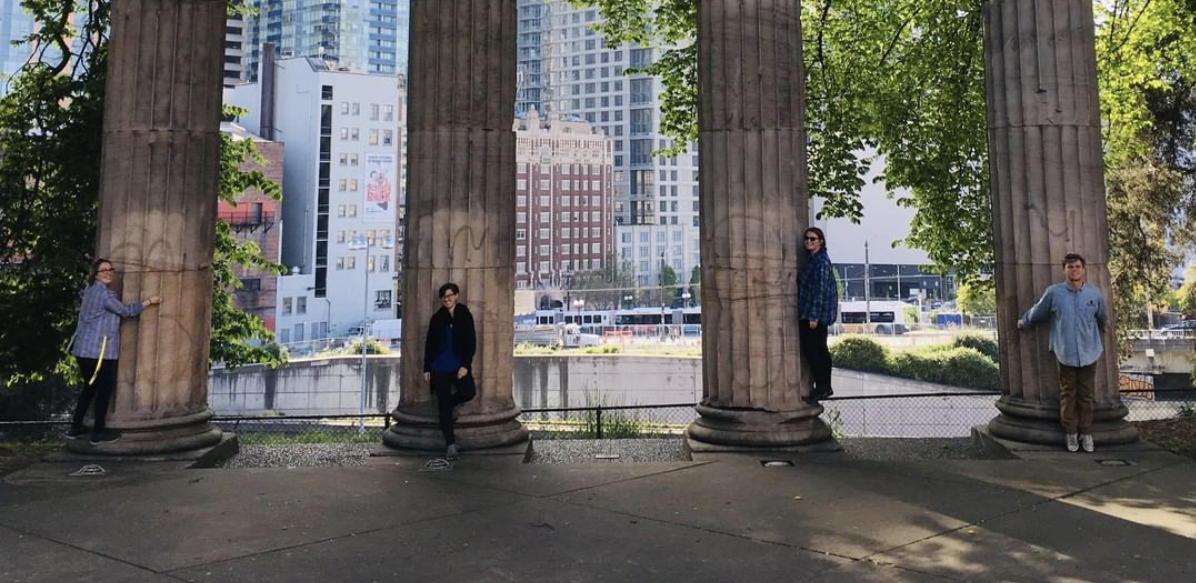In May 2019, the R.W. Kern Center team traveled to Seattle for the Living Future Unconference. Below are thoughts from Cat, an RWKC Intern student studying environmental studies and visual arts.
Q What was your favorite part about your trip to Seattle to the Living Future Unconference?
A Everything was delightful! My favorite part was the community which the conference brought together. The community in Seattle provided a stark contrast to the small liberal arts college bubble that I have grown accustomed to, and it exceeded my expectations. I also appreciated the surprisingly strong expression of emotion in a setting which I expected to be somewhat emotionless. Before Living Future, I perceived conferences as stilted and professional, but after I saw a group of adults burst into tears in one of the sessions I attended, I know they can also be spaces of great vulnerability. The open nature of the conference was inspiring, and the ideas brought forth were refreshing.
Q Were you particularly inspired by any part of the conference?
A Jamie Margolin‘s keynote speech was the most inspiring part of the conference for me. Climate change is one of the most pressing issues that we are facing, and Jamie clearly outlined why our practices need to change. We need the “no-hesitation” approach, as she put it. It was incredible to see such a young person so spirited and inspired to be heard.
Q Do you feel like you left with a better understanding of ILFI then when you arrived?
A Definitely. Working at the R.W. Kern Center has allowed me to better understand ILFI from the project perspective — the day-to-day operations of a living building. Living Future showed me the perspective of the other groups involved in the process — design team, construction team, regulators, etc. Living Future provided me the opportunity to consider how a Building gets built and becomes a Living Building.
Q Do you think the ILFI is creating real change?
A I believe that the Living Building Challenge is one way we can help mitigate climate change, but I struggle with the reality that achieving the Living Building Challenge is still expensive or logistically out of reach for many organizations. The ILFI is banking on the ripple effect from these advanced Living Buildings eventually spreading out to become standard practice. I hope this happens. In the meantime, this community needs to keep actively working to make Living Buildings and their positive impacts accessible to everyone.
Q How would you suggest for others to contribute to a better built environment?
A Education, sharing thoughts/ideas, and listening critically. The conference allowed me to explore other areas and hear how others have found solutions to their own environmental challenges. Collaboration is one of the best ways we can we turn ideas into practice, making a legitimate change to our built environment.


